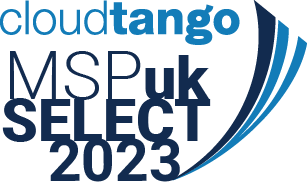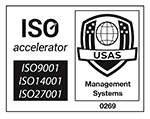What is an IT Disaster Recovery plan?

IT disaster recovery plans provide step-by-step procedures for recovering disrupted systems and networks, and help organisations resume normal operations.
The goal of these processes is to minimise any negative impacts on business operations. An IT disaster recovery process identifies critical IT systems and networks; prioritise their recovery time objective; and delineates the steps needed to restart, reconfigure, and recover them.
A comprehensive disaster recovery plan includes all the relevant supplier contacts, sources of expertise for recovering disrupted systems and a logical sequence of action steps for a smooth recovery.
Assuming you have completed a risk assessment and have identified potential threats to your IT infrastructure, the next step is to determine which infrastructure elements are most important to the performance of your company’s business. Also assuming that all IT systems and networks are performing normally, your firm ought to be fully viable, competitive and financially solid. When an incident — internal or external — negatively affects the IT infrastructure, the business could be compromised.
According to National Institute for Standards and Technology, Contingency Planning for Information Technology Systems, the following summarises the ideal structure for an IT disaster recovery plan:
- Develop the contingency planning policy statement. A formal policy provides the authority and guidance necessary to develop an effective contingency plan.
- Conduct the business impact analysis (BIA). The business impact analysis helps to identify and prioritise critical IT systems and components.
- Identify preventive controls. These are measures that reduce the effects of system disruptions and can increase system availability and reduce contingency life cycle costs.
- Develop recovery strategies. Thorough recovery strategies ensure that the system can be recovered quickly and effectively following a disruption.
- Develop an IT contingency plan. The contingency plan should contain detailed guidance and procedures for restoring a damaged system.
- Plan testing, training and exercising. Testing the plan identifies planning gaps, whereas training prepares recovery personnel for plan activation; both activities improve plan effectiveness and overall agency preparedness.
- Plan maintenance. The plan should be a living document that is updated regularly to remain current with system enhancements.
Speak directly with an IT expert today
Have questions or need advice?
There’s no need to wait – get in touch with our friendly team now.
Call us on 01392 454750 or email us for a quick, expert response.
Book a FREE Workplace discovery session.
Get the most out of your IT investment, know you are working more efficiently, confirm or challenge the guidance you have been getting when you take up this offer. Our Workplace discovery session explores how you work, the technology you use and identifies any challenges or pain points you may have. A high-level report will identify any opportunities for enhancement, solutions you may like to consider and beneficial ways of working.
Request a call back
We know it’s all about trust
Zero-risk guarantee
We are the region’s only managed IT support provider to offer a zero-risk guarantee.
We are committed to providing the best IT support in the industry – we stake our reputation and our hard-earned cash.
The IT Champion ‘zero-risk guarantee’ states that if you do not see satisfactory results within 90 days we will give you your money back.
We know that choosing the right IT provider can be daunting. To eliminate the stress, and uncertainty, of hiring a competent IT support company, we offer our clients the zero-risk guarantee on all our managed IT support plans.
60 second challenge
We work hard to ensure that one of our front line team is available in under a minute.
On average, our front line team answers calls in under 15 seconds and we are consistently rated as very easy to get help from via our closed-ticket surveys.
If one of our customers thinks we didn’t hit our 60-second target when they called us (within our working hours), we’ll send them a little something that’s sweet or healthy in recognition of how important we take the challenge.
Award-winning
We are exceptionally proud to have won awards locally, regionally and from within our industry.
Being recognised by CloudTango as one of the top 50 Managed Service Providers (MSP) of the UK in 2021 is a great accolade to our work. Exeter College and ourselves being shortlisted as the small employer of the year in 2020 for our work with apprentices over the years. In 2018, we won the business service category of the Exeter Living Awards.
Our fresh approach
From the first time you talk with us to speaking with one of our friendly frontline technicians, our refreshing, open and friendly manner underpins the ease of doing business with us.
We do everything within our control to ensure your IT remains stable and secure. If there is an issue, we will actively attend to it within clear time frames. Keeping you updated, owning responsibility for any issues that we should have prevented.





